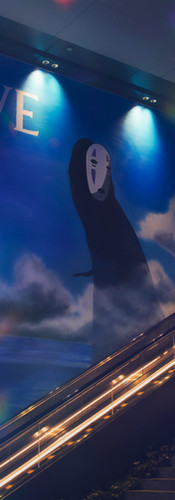The cherry blossom, or "Sakura," season in Japan is a time when nature adorns itself with delicate shades of pink and white, creating a picturesque setting for photographers, especially those capturing the precious moments of couples and families. The transient beauty of these blossoms reminds us of the fleeting nature of life's most beautiful moments, making every photograph a cherished memory.
Tokyo
Ueno Park: As the blossoms form a floral canopy, the park becomes a vibrant hub for families, offering a lively background for joyful portraits.
Yoyogi Park: Its expansive lawns and scenic beauty make it a favorite for couples seeking a serene ambiance, illuminated by the soft light of dawn or dusk.
Hibiya Park: The juxtaposition of Tokyo's urbanity with the natural splendor of cherry blossoms provides a unique setting for contemporary photo shoots.
Mitsumoto Park: Known for its scenic beauty and tranquil ponds, Mitsumoto Park offers a less crowded alternative, ideal for capturing peaceful moments amidst nature's bloom.
Naka-Meguro: A Cherry Blossom Haven
Best Viewing Dates: The end of March to the beginning of April is the perfect time to visit, as the blossoms are in full bloom, setting a magical stage for photography.
Kyoto
Maruyama Park: The weeping cherry trees create an enchanting atmosphere, perfect for romantic and reflective photography.
The Philosopher's Path: This path offers a peaceful backdrop for walking and contemplation, lined with cherry trees that enhance the beauty of any photo.
Best Viewing Dates: Late March to early April, when Kyoto's historic landscapes are beautifully accentuated by the cherry blossoms.
Osaka
Osaka Castle Park: The grandeur of Osaka Castle, surrounded by cherry blossoms, offers a majestic setting for capturing the essence of Japanese heritage and natural beauty.
Kema Sakuranomiya Park: The river adorned with cherry trees on either side provides a panoramic setting for group photos and wide-angle shots.
Best Viewing Dates: The cherry blossoms in Osaka are best enjoyed from late March to early April when the city is awash in pink.
Nagoya
Yamazaki River: The tranquility of the river, bordered by cherry blossoms, offers a serene setting for capturing the beauty of spring.
Tsuruma Park: With its festive atmosphere and spacious areas, it's a perfect location for family portraits amidst the blooming Sakura.
Best Viewing Dates: The ideal time to witness the full glory of Nagoya's cherry blossoms is from late March to early April.
Fukuoka
Maizuru Park: The historical backdrop of Fukuoka Castle ruins amidst the cherry blossoms provides a narrative depth to photographs, blending culture and nature.
Uminonakamichi Seaside Park: Its diverse landscapes offer numerous photographic opportunities, from intimate couple shots to lively family gatherings.
Best Viewing Dates: Visit from late March to early April to see Fukuoka's parks and gardens in their most splendid bloom.
Photography Tips
Light and Timing: Utilize the golden hours for soft, natural lighting that enhances the pink hues of the cherry blossoms and casts a flattering glow on subjects.
Composition and Perspective: Play with the depth of field, using cherry blossoms in the foreground to create a sense of depth and framing subjects with the blossoms to highlight their expressions and emotions.
Engaging with Subjects: Encourage natural interactions among family members and couples to capture candid moments that reflect genuine connections and the joy of the season.
A Magnet for Tourists, Families, and Couples
This brief but breathtaking period draws tourists from across the globe, eager to witness the ephemeral beauty of the Sakura. The cherry blossoms become a perfect backdrop for photographers, particularly those specializing in portraits. Families don traditional attire or their best outfits and gather under the blooming trees, seeking to capture the joy and unity of their loved ones. Couples, from newlyweds to those celebrating anniversaries, seek the romantic ambiance of the Sakura for their photoshoots, hoping to encapsulate their love amidst the blossoms' fleeting beauty.
For a photographer, the cherry blossom season is a golden opportunity to capture the essence of human emotions against a uniquely beautiful backdrop. The contrast of the delicate blossoms against the vibrant expressions of people provides depth to photographs that are hard to replicate at any other time of the year.
Golden Hour Magic: Just as the sun rises or before it sets, the soft sunlight filters through the Sakura, casting a gentle glow on the subjects. This magical light is perfect for capturing the subtle nuances of human expressions, making it a coveted time for photographers.
Hanami Festivities: The traditional cherry blossom viewing parties, known as Hanami, are gatherings where families and friends celebrate under the blooming trees. These moments of laughter, conversation, and reflection offer candid shots that are as natural as they are beautiful.
Romantic Walks: For couples, a stroll along a cherry blossom-lined path or a quiet moment shared under a blooming tree offers an intimate setting for romantic portraits. The falling petals, often likened to a gentle shower of pink snow, add a dreamlike quality to the photographs.
In the context of Japanese culture, cherry blossoms symbolize the transient nature of life, reminding us to cherish every moment. Capturing these moments through photography allows us to hold onto the beauty and emotions long after the petals have fallen. Each photo tells a story, a frozen slice of time where joy, love, and the awe of nature's beauty are immortalized.
For families, these photographs become heirlooms, passed down through generations, a testament to shared moments of happiness. For couples, they are a reminder of their love, captured in the soft embrace of Sakura. And for the photographer, each image is a piece of art, a moment of connection between human emotion and the sublime beauty of nature.
As the cherry blossom season approaches each year, the anticipation builds not just for the sight of the blossoms, but for the special moments that will be captured and cherished, framed by the delicate beauty of sakura.







































